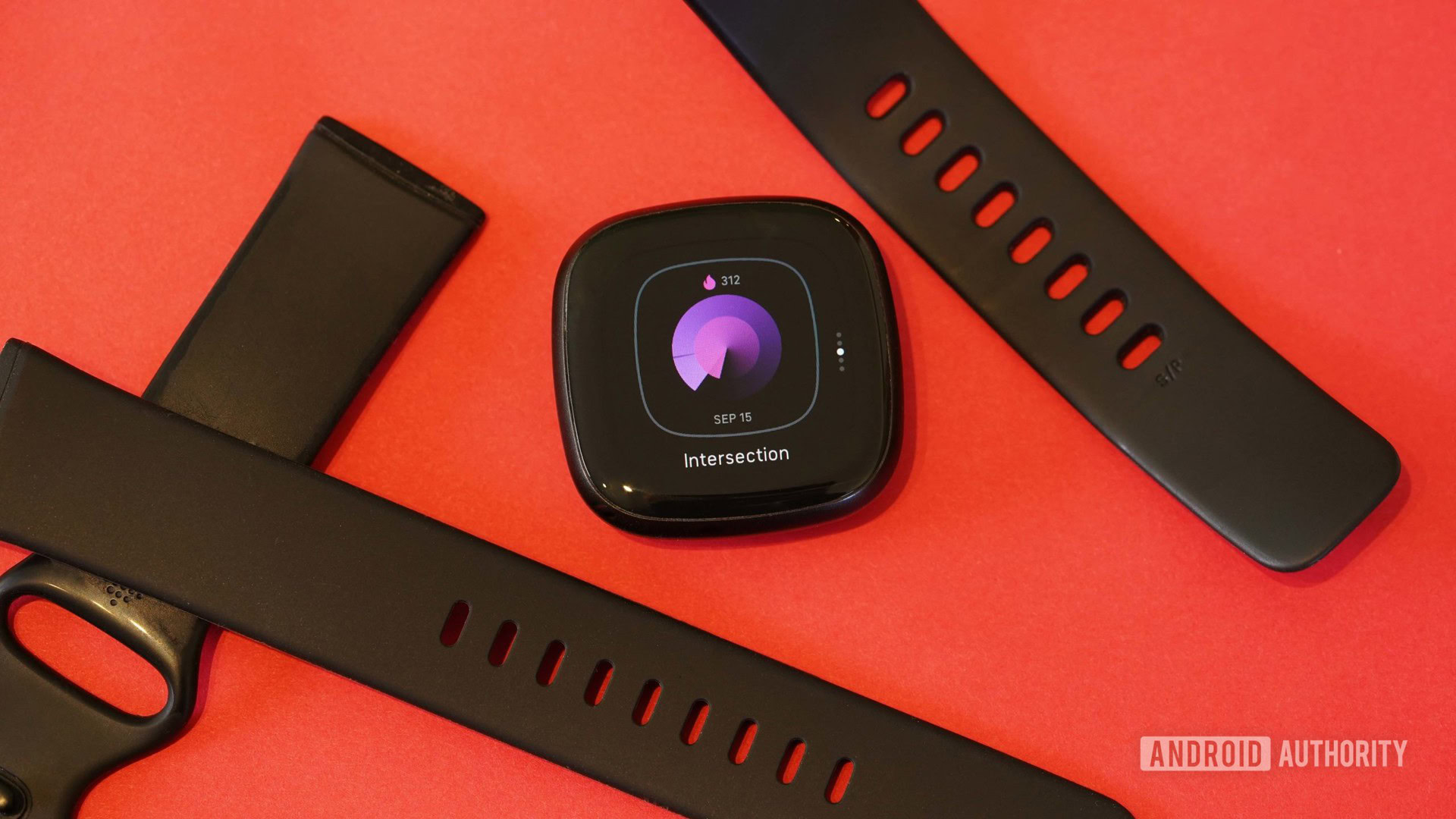[ad_1]
Switching to a solid-state drive is the very best improve you can also make to your PC. These wondrous units pace up boot occasions, enhance the responsiveness of your packages and video games, and usually make your laptop really feel quick. However not all solid-state drives are the identical. You’ll be able to spend huge to attain learn and write speeds that attain an entire different degree, or you could find top-notch SSDs that supply strong efficiency with out breaking the financial institution, particularly for those who peruse the continuing Amazon Prime Day SSD offers this week.
Many SSDs are available in a 2.5-inch kind issue and hook up with your PC by way of the identical SATA port utilized by a standard onerous drive. However tiny NVMe (Non-Unstable Reminiscence Categorical) “gumstick” SSDs that slot in an M.2 connection on a contemporary motherboard have gotten more and more widespread, together with blazing-fast PCIe 4.0 solid-state drives for appropriate PCs, and also you’ll even discover SSDs that sit on a PCIe adapter and slot into your motherboard like a graphics card or sound card. Selecting the right SSD isn’t so simple as it was, although wonderful new drives just like the SK Hynix Platinum P41 are actually making an attempt to attain no-brainer improve standing.
That’s the aim of this information. We’ve examined quite a few drives to search out the very best SSDs for any use case, and provide our prime picks under. Along with that we offer you helpful data on what to search for in an SSD so that you is usually a extra knowledgable shopper. Fast word: This roundup solely covers inner solid-state drives. Try PCWorld’s information to the very best exterior drives for those who’re in search of a conveyable storage resolution, such because the Samsung T7 Protect—our newly topped decide for the very best high-performance transportable SSD.
Up to date 07/24/2022 Try our newest evaluations of the Mandalorian-themed SSD drops from Seagate—the Beskar Ingot SATA SSD and the Beskar Ingot NVMe SSD. Each are top-notch drives good for the Star Wars fan with a windowed case who desires to indicate off their newest Beskar metallic bounty.
The most effective SSDs
Samsung 870 EVO – Greatest SATA SSD

Execs
- Glorious efficiency, particularly with small file operations
- In contrast to the QVO, lengthy writes don’t decelerate
When you’re trying so as to add some storage by way of a standard 2.5-inch SATA drive quite than a tiny M.2 “gumstick,” Samsung’s spectacular 870 EVO is your greatest guess. It’s the quickest SATA SSD we’ve examined, it’s out there in as much as 4TB of capability, and it’s exceedingly reasonably priced given its pace. Sufficient mentioned, actually—although Samsung’s killer Magician SSD administration software program and lengthy guarantee interval additionally deserve a shout-out. The EVO collection is a legend amongst SSDs for a motive.
That mentioned, the SK Hynix Gold S31 can also be price contemplating. It’s only a hair behind the 870 EVO in benchmarks and prices $12 much less in its 1TB model, at $98. The SK drive is solely out there in a 1TB taste today, nevertheless, whereas the 870 EVO ranges from a 250GB mannequin for $60 all the way in which up to an enormous 4TB goliath for $450. Samsung’s 1TB providing prices $110.
Learn our full
Samsung 870 EVO SATA SSD assessment
Essential BX500 – Greatest price range SATA SSD
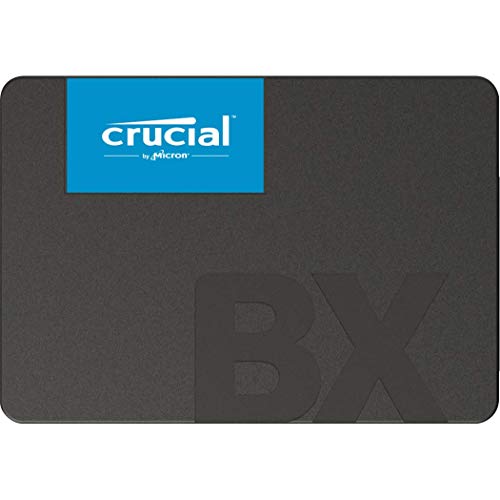
Execs
- Good on a regular basis efficiency
- Low worth per gigabyte
Cons
- Slows drastically when secondary cache runs out
The Samsung 870 EVO affords an intoxicating mix of efficiency and reasonably priced pricing, however if you need as a lot capability as attainable for as cheaply as attainable, contemplate the Essential BX500. You will get its 1TB mannequin for $80, a whopping $30 lower than the equal EVO, whereas a 480GB model prices simply $45. 240GB and 2TB variations are additionally out there.
“We suggest this QLC drive within the bigger capacities for individuals who need good on a regular basis efficiency for a price range worth,” we mentioned in our assessment. “The smaller capacities will probably run into extra slowdowns throughout heavy writes.”
Learn our full
Essential BX500 SATA SSD (2TB) assessment
PNY CS2140 – Greatest PCIe 3.0 NVMe SSD
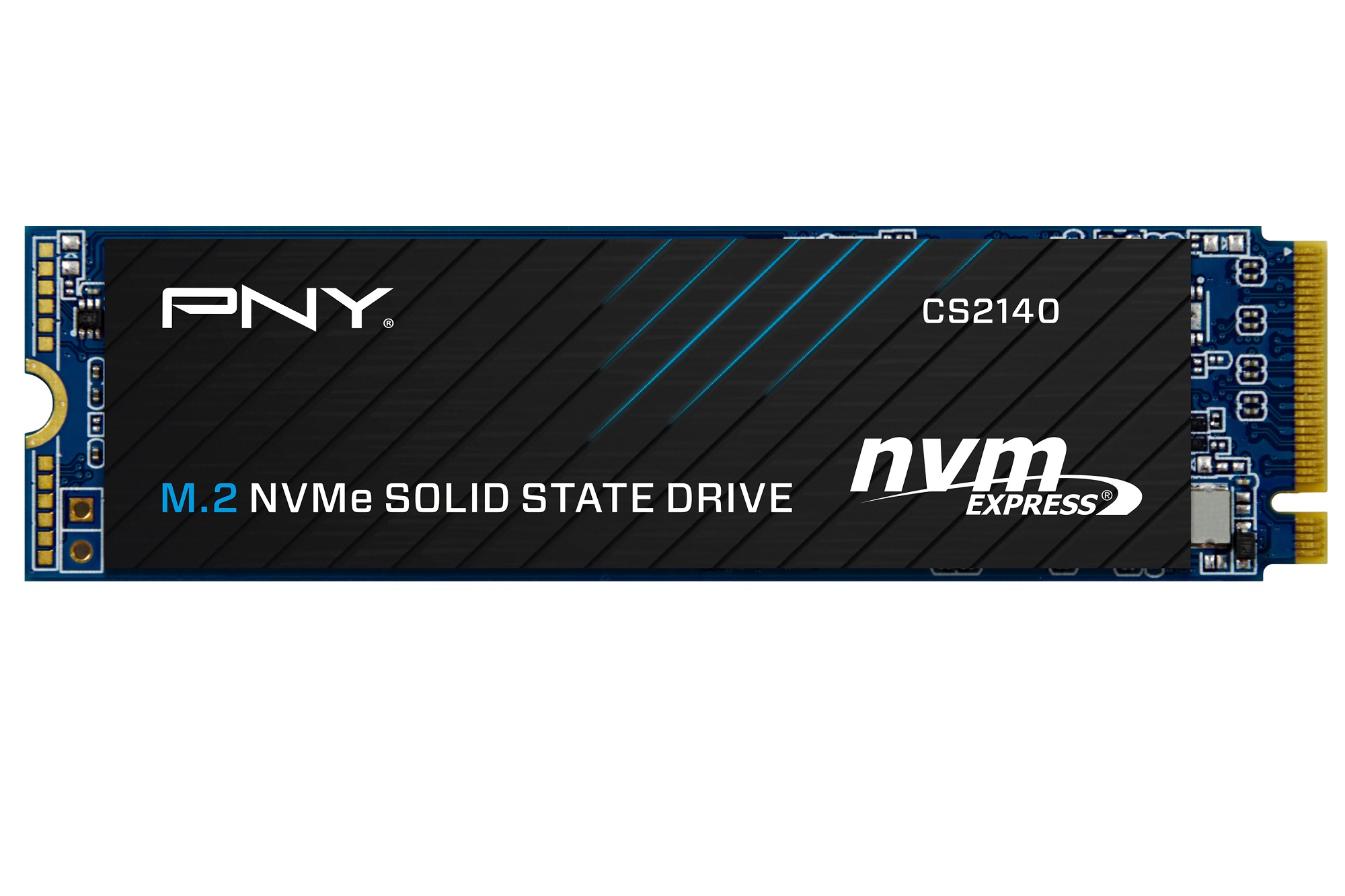
Execs
- Superb on a regular basis performer
- Tremendous reasonably priced on the time of this writing
Cons
- TBW guarantee data not displayed prominently.
- PCIe 4, however solely PCIe 3-like efficiency
Positive, PCIe 4.0 SSDs scream throughout huge file transfers, however for those who’re nonetheless utilizing an older system with PCIe 3.0, upgrading to an NVMe SSD nonetheless offers substantial advantages to your PC’s pace and general responsiveness. Higher but, you don’t want to interrupt the financial institution to take benefit. The PNY CS2140 is an excellent day by day performer, however it’s out there for lowball costs—simply $93 for a 1TB mannequin as I write this. That’s partially as a result of this drive makes use of your system reminiscence to assist with knowledge caching. It’s technically a PCIe 4.0 SSD, however its efficiency is pretty horrible on that entrance. The CS2140’s PCIe 3.0 efficiency is sweet sufficient to earn it this nod, nevertheless, particularly given its cut price pricing.
PNY’s drive even sports activities a five-year guarantee, although that’s offset considerably by low TBW scores. All informed, this drive is an excellent alternative for anybody trying to snag a strong on a regular basis SSD at an awesome worth. The Essential P5 and SK Hynix Gold P31 are different strong choices, although they value about $15 to $20 extra.
Learn our full
PNY CS2140 1TB NVMe SSD assessment
SK Hynix Platinum P41 – Greatest PCIe 4.0 SSD
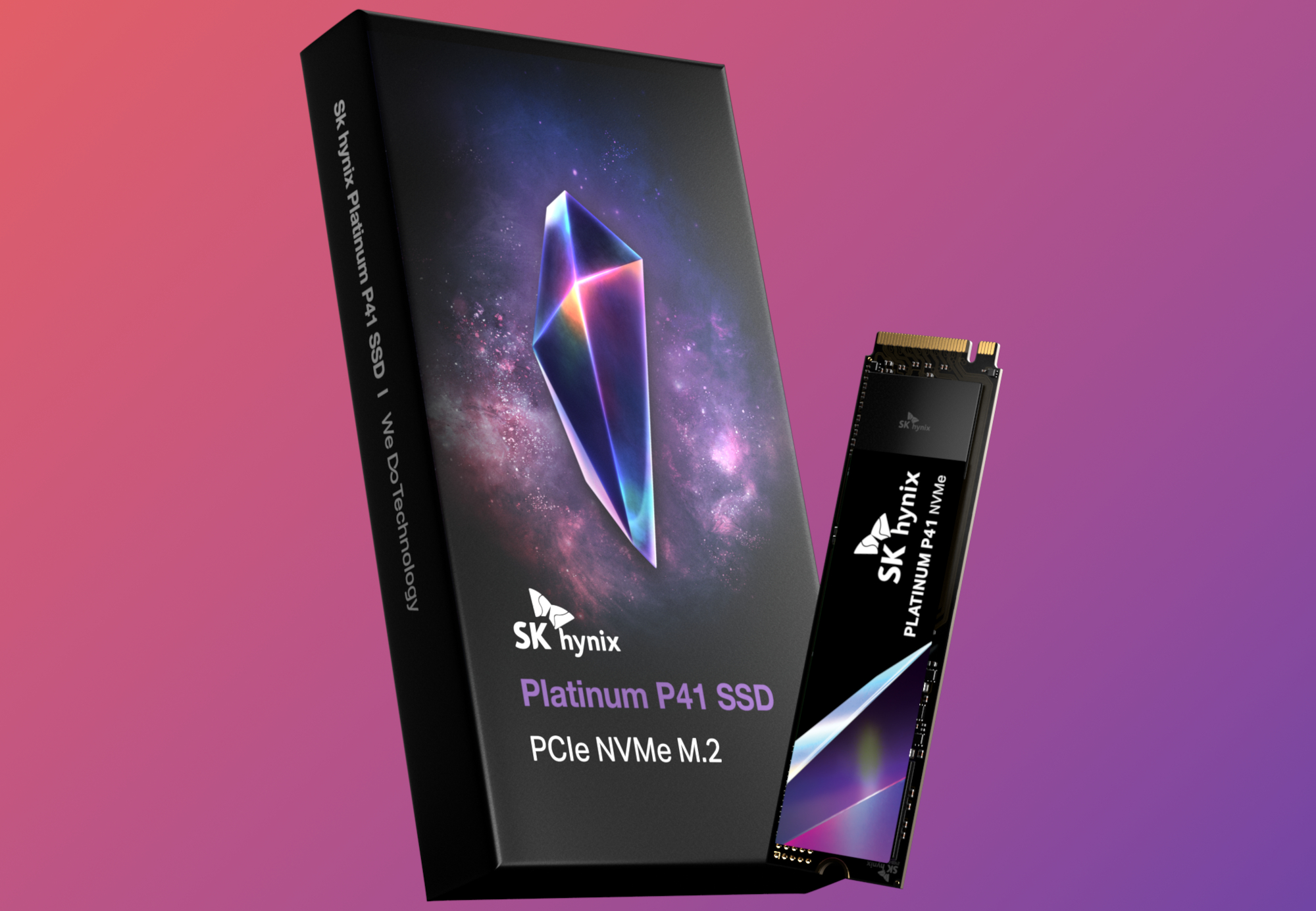
Execs
- Glorious on a regular basis efficiency
- Sustains efficiency throughout lengthy writes
- Priced low for a top-tier PCIe 4 SSD
MSRP:
$110 (500GB) | $150 (1TB) | $260 (2TB)
When you’re in search of a strong all-around PCIe 4.0 SSD, you may’t go unsuitable with the SK Hynix Platinum P41, whose delectable combine of utmost efficiency and compelling pricing not too long ago unseated Samsung 980 Professional’s on this listing. The Platinum P41 is only a sliver slower than the quickest second-gen PCIe 4.0 SSDs just like the Corsair MP600 Professional XT, however sells for significantly much less, with its 1TB taste going for roughly the identical worth because the much-slower 980 Professional. You’d by no means the distinction in day-to-day use between the P41 and people chart-toppers, however you’ll certain really feel the additional $50 in your pockets.
Don’t purchase this for those who’re solely utilizing a system with PCIe 3.0, nevertheless. It’s nonetheless an awesome drive on these PCs, however not considerably higher than the lower-priced competitors.
Learn our full
SK Hynix Platinum P41 NVMe SSD assessment
Adata XPG Gammix S70 Blade – Greatest PCIe 4.0 SSD runner-up

Execs
- Glorious efficiency over PCIe 3 and 4
- PlayStation 5 appropriate
- Reasonably priced for a top-tier drive
Cons
- Adata has been recognized to swap in slower elements than examined on cheaper SSDs
The SK Hynix Platinum P41 could also be the very best PCIe 4.0 SSD round, however it’s far out of your solely possibility. In order for you slower, however nonetheless plenty-fast PCIe 4.0 speeds for a barely cheaper price, contemplate the Adata XPG Gammix S70 Blade, which performs higher than even the Samsung 980 and prices lower than these SK Hynix and Samsung choices in 1TB capacities, at $128 versus $150. The S70 Blade can also be PlayStation 5 appropriate. This is without doubt one of the greatest SSDs in the marketplace, however Adata’s historical past of swapping out parts for slower elements over the lifetime of sure SSDs leads us to provide SK Hynix’s Platinum P41 the general nod.
Learn our full
XPG Gammix S70 Blade assessment
Adata XPG Atom 50 – Greatest price range PCIe 4.0 SSD
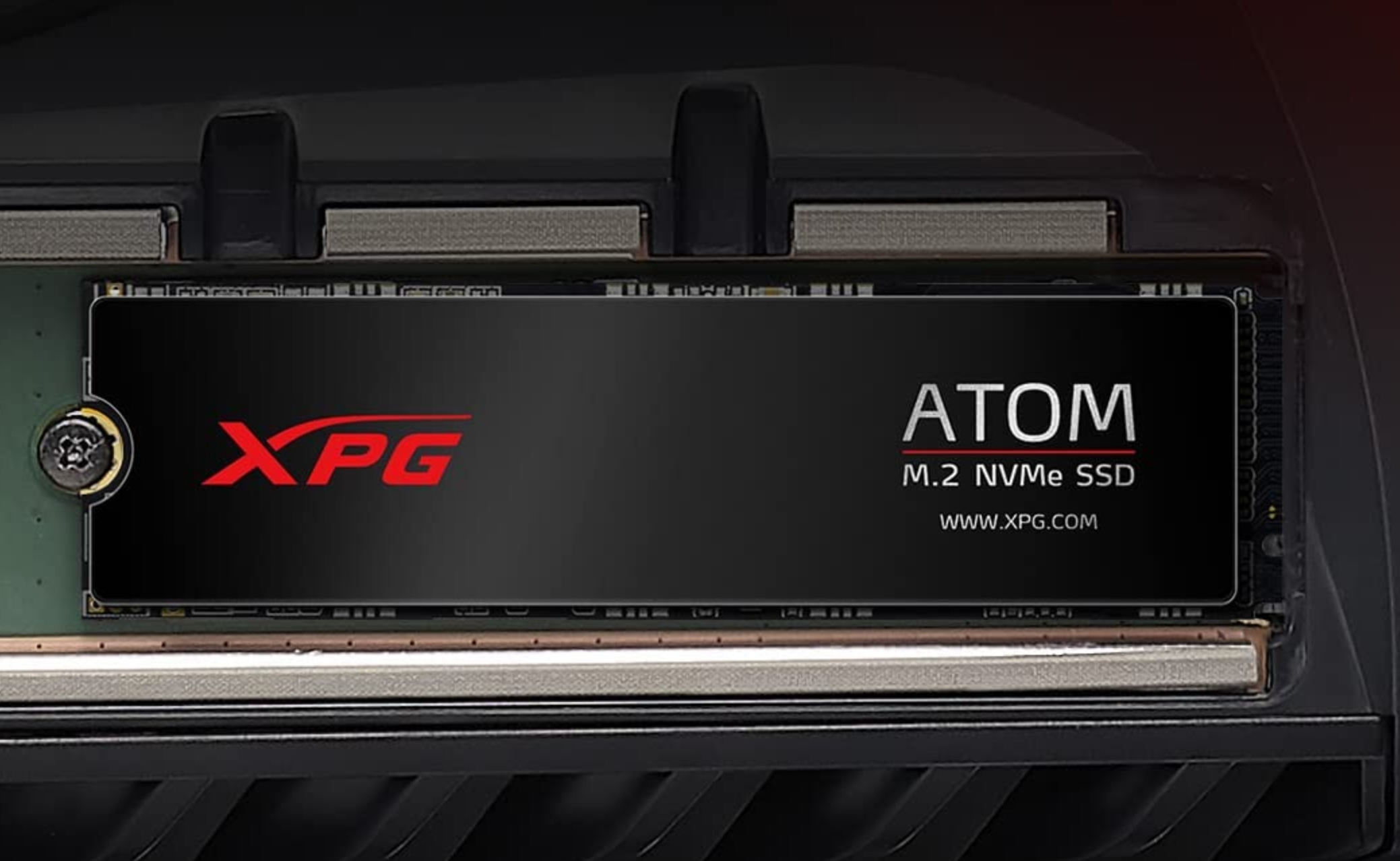
Execs
- Glorious actual world efficiency
- PS5 appropriate
- Reasonably priced
Cons
- A few GBps slower on PCIe 4 artificial benchmarks
- Makes use of host reminiscence buffer (HMB) quite that onboard DRAM, although seemingly with out the standard efficiency penalty.
- PS5 doesn’t help HMB
MSRP:
$120 for 1TB, $250 for 2TB
Bleeding-edge PCIe 4.0 SSDs aren’t fairly as low cost as SATA or PCIe 3.0 NVMe drives, however we’re beginning to see a number of fashions out there at compelling costs now that the expertise is changing into established. The most effective of the bunch? The Adata XPG Atom 50. Pricing rocks, at simply $120 for a 1TB mannequin, and it delivers sneaky-good efficiency. The Atom 50 was second-tier on our artificial benchmarks, certain, however it tied for primary in our real-life switch checks over PCIe 4. “The Atom 50 is a superb cut price and an excellent match to your PC,” we mentioned in our assessment.
The Atom 50 additionally performs good with Sony’s PlayStation 5, however since this drive makes use of your system RAM as a major cache, efficiency could dip a bit on the console.
Learn our full
Adata Atom 50 NVMe SSD assessment
Adata Elite SE880 SSD – Most transportable SSD
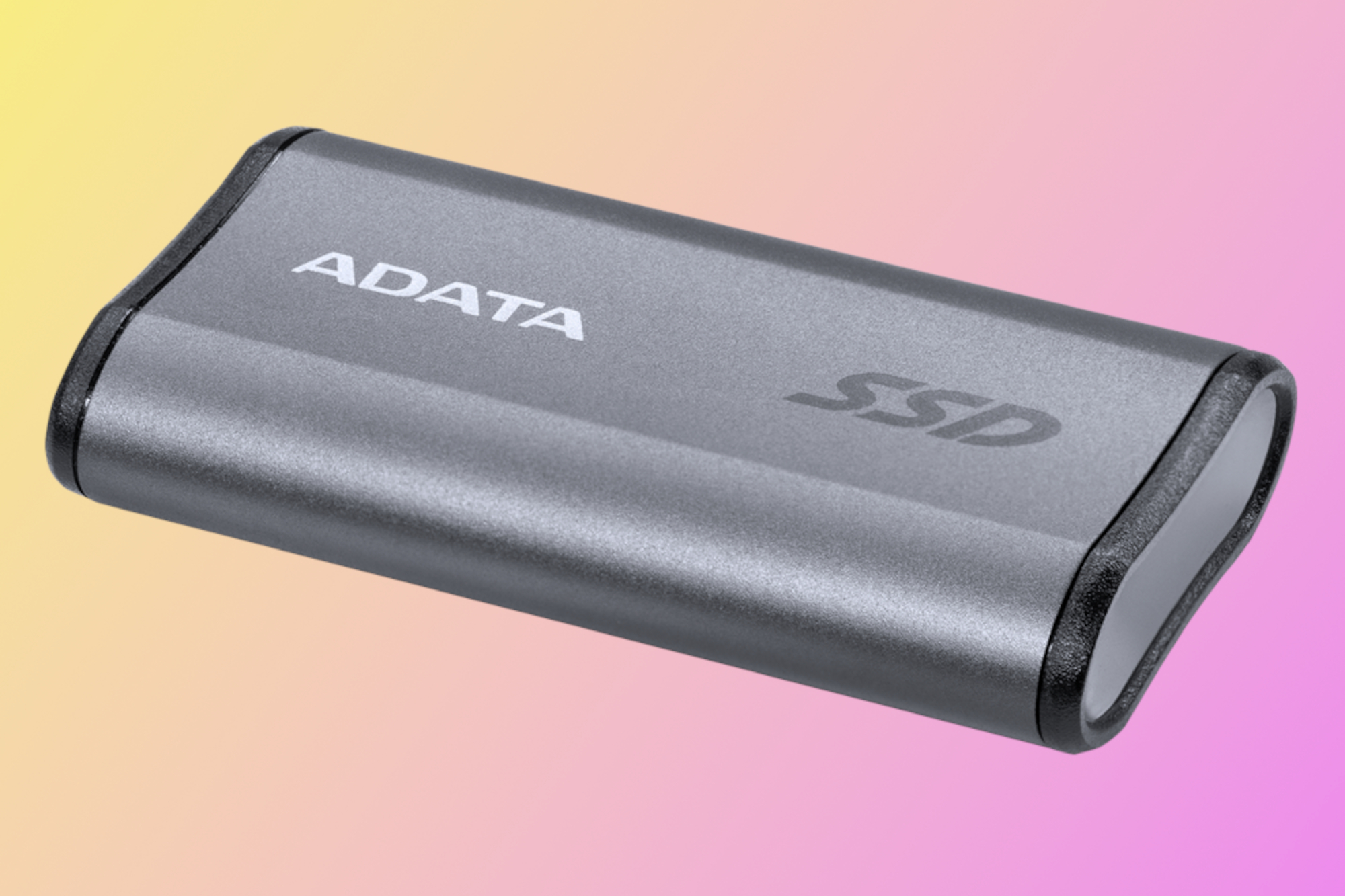
Execs
- Very quick, over-20Gbps USB connection
- Extraordinarily small kind issue
- 5-year guarantee
Cons
- Slows significantly throughout lengthy contiguous writes
- Considerably low TBW ranking
MSRP:
$79.99 for 500GB I $129.99 for 1TB
No SSD we’ve seen can match Adata’s Elite SE880 for portability. Certainly, measuring in at solely 2.55 inches lengthy, 1.38 inches large, and 0.48 inches thick, it reminds you extra of a USB thumb drive than a normal SSD. It weighs a mere 1.1 ounces in addition, just about disappearing when positioned in your pocket.
The Elite SE880 can also be very quick at on a regular basis duties. In real-world 48GB switch checks, the drive displayed excellent marks. Nevertheless, it did lose vital floor within the longer contiguous write checks which means photograph and video execs with giant information may wish to take a look at different choices. Contemplating the respectable switch charges and the small kind issue, the Elite SE880 is a good decide for these trying to take their SSD on the go.
Learn our full
Adata Elite SE880 SSD assessment
Kingston XS200 USB SSD – Greatest high-capacity transportable SSD
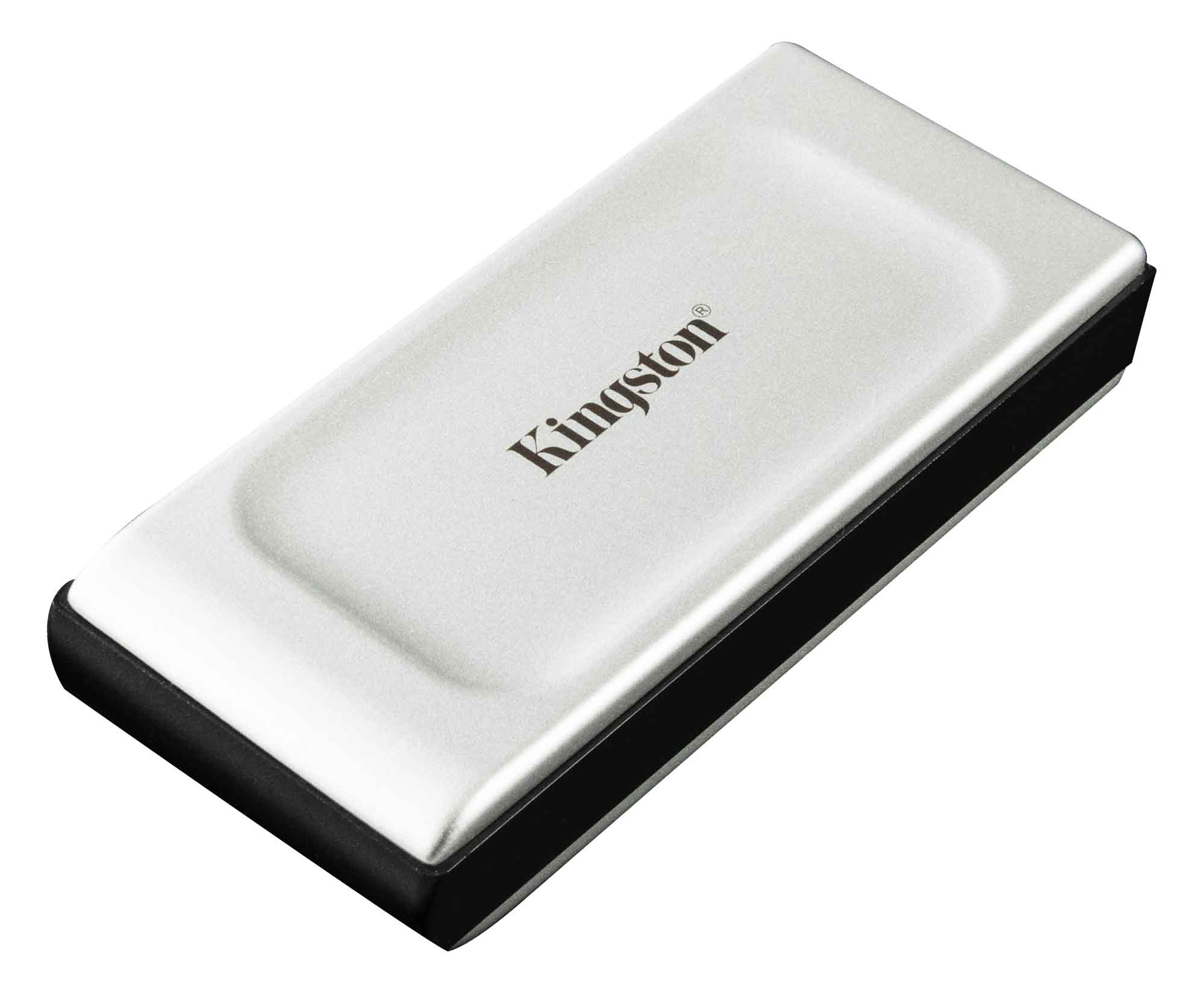
Execs
- Tremendous svelte
- Good 20Gbps efficiency
- Out there in as much as 4TB in capability
Cons
- Slower than a lot of the competitors
- Not a lot of a looker
MSRP:
$75 for 500GB I $160 for 1TB I $285 for 2TB I $500 for 4TB
The Kingston XS2000 sits within the Goldilocks zone of SSDs—it may not be the smallest, quickest, or largest capability drive, however it scores above common on most of those classes. It’s sufficiently small to slot in your pocket and with as much as 4TB in capability, it comes with significantly extra storage than every other ultra-portable drive on the market proper now.
The Kingston XS2000 additionally has knowledge switch charges of as much as 20Gbps, which isn’t lightning fast, however it beats the 10Gbps competitor transportable drives. General, this tremendous small, reasonably priced, and quick sufficient SSD is a strong product, particularly in case you have lots of knowledge it’s worthwhile to carry round with you.
Learn our full
Kingston XS200 USB SSD assessment
Corsair MP600 Professional XT – Greatest high-performance PCIe 4.0 SSD
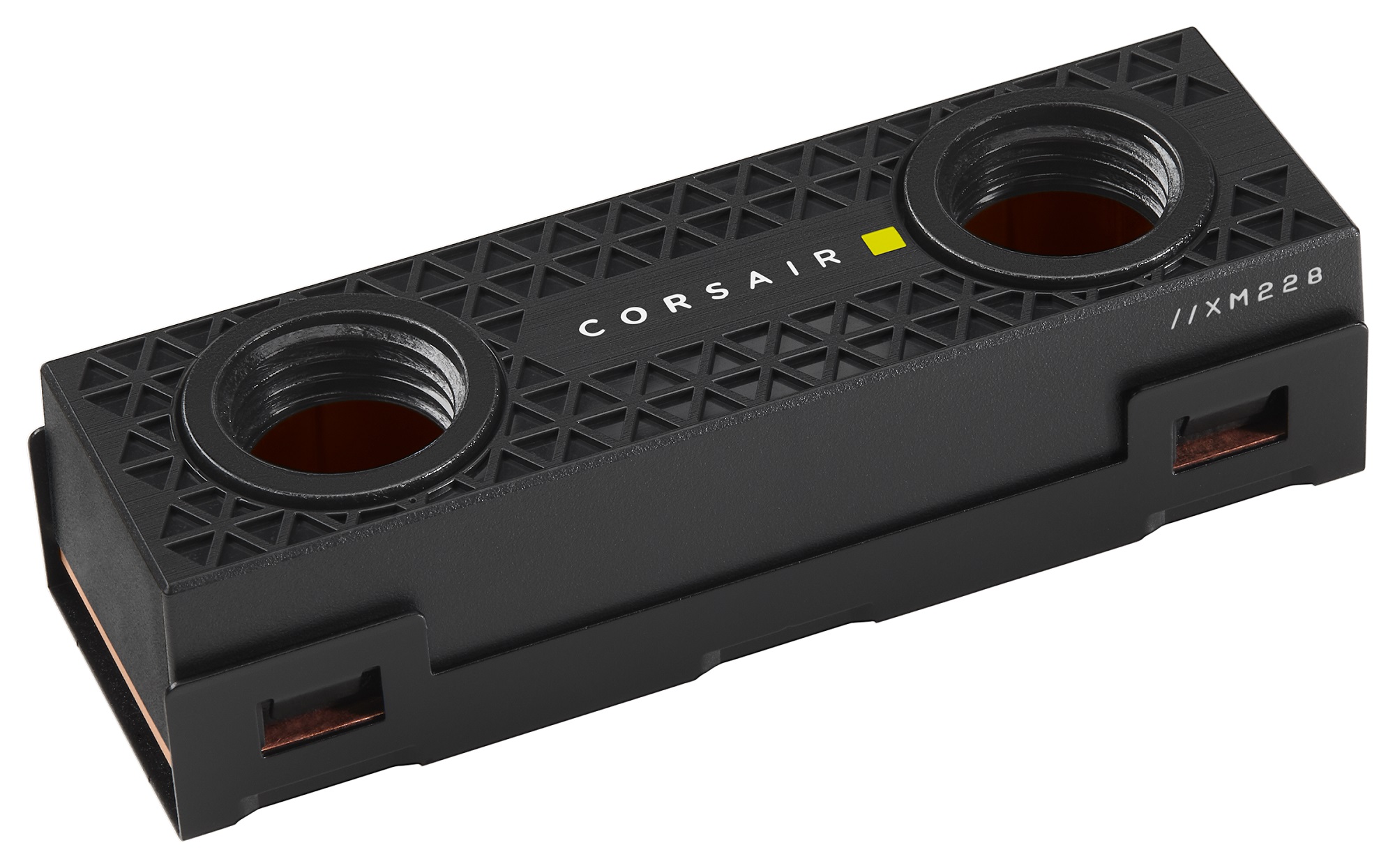
Execs
- Implausible efficiency
- Hefty warmth sink (detachable)
- Liquid-cooling possibility
- Reasonably priced for PCIe 4
Cons
- A lot pricier than PCIe 3 drives
MSRP:
$200 1TB | $400 2TB (reviewed) | $990 4TB
“Contemplating the Corsair MP600 Professional XT’s tantalizing mixture of worth, efficiency, and options an Editor’s Alternative award was no-brainer,” we mentioned in our assessment. “Extremely advisable.” This “absolute barn-burner” of an SSD hangs with and generally bests the quickest drives we’ve ever examined, for a significantly cheaper price than its fellow hot-rod rivals. It comes with a five-year guarantee that ensures a whole lot of written terabytes earlier than failure. And if you wish to get fancy, there’s even a model designed to plug into the liquid-cooling setup of unique PCs, for a minimal markup.
We are able to’t discover a lot to complain about. You’ll want a contemporary PC (from the final two or three years) with PCIe 4.0 help to unlock these face-melting speeds, nevertheless, and this form of cutting-edge efficiency doesn’t come low cost. The 1TB model of the Corsair MP600 Professional XT will set you again $200, whereas 2TB and 4TB choices go for $300 and $800, respectively.
So far as alternate options go, the Kingston KC3000 and Seagate FireCuda 530 each ship face-melting efficiency on par with Corsair’s drive. That mentioned, Seagate’s drive prices fairly a bit extra, whereas the KC3000 is barely formally out there by Kingston’s web site. The MP600 Professional XT’s wider availability helps it earn our prime advice.
Learn our full
MP600 Professional XT assessment
NVMe SSD setup: What it’s worthwhile to know
Pay attention to what NVMe drives ship before you purchase in. Normal SATA SSDs already supercharge boot occasions and loading occasions for PCs, and for an entire lot cheaper. You’ll get essentially the most use from NVMe drives, be it in a M.2 kind issue just like the Samsung 980 Professional or a PCIe drive, for those who routinely switch knowledge, particularly in giant quantities. When you don’t try this, NVMe drives aren’t well worth the worth premium.
When you resolve to purchase an NVMe SSD, ensure your PC can deal with it. This can be a comparatively new expertise, so that you’ll solely be capable to discover M.2-connection motherboards from the previous few years. Suppose AMD Ryzen and mainstream Intel chips from the Sixth-generation period onward, for essentially the most half. NVMe SSDs that had been mounted on PCIe adapters had been widespread within the expertise’s early years, earlier than M.2 adoption unfold, however they’re rarer now. Be sure to’re truly in a position to make use of an NVMe SSD before you purchase one, and remember that you simply’ll want 4 PCIe lanes out there with a view to use it to its full potential. You’ll want a more recent Ryzen 3000- or 5000-series CPU, or an Intel Eleventh- or Twelfth-gen CPU, to run a PCIe 4.0 SSD to its full potential. PCIe 4.0 NVMe SSDs will work in a PCIe 3.0 laptop, however at slower PCIe 3.0 speeds.
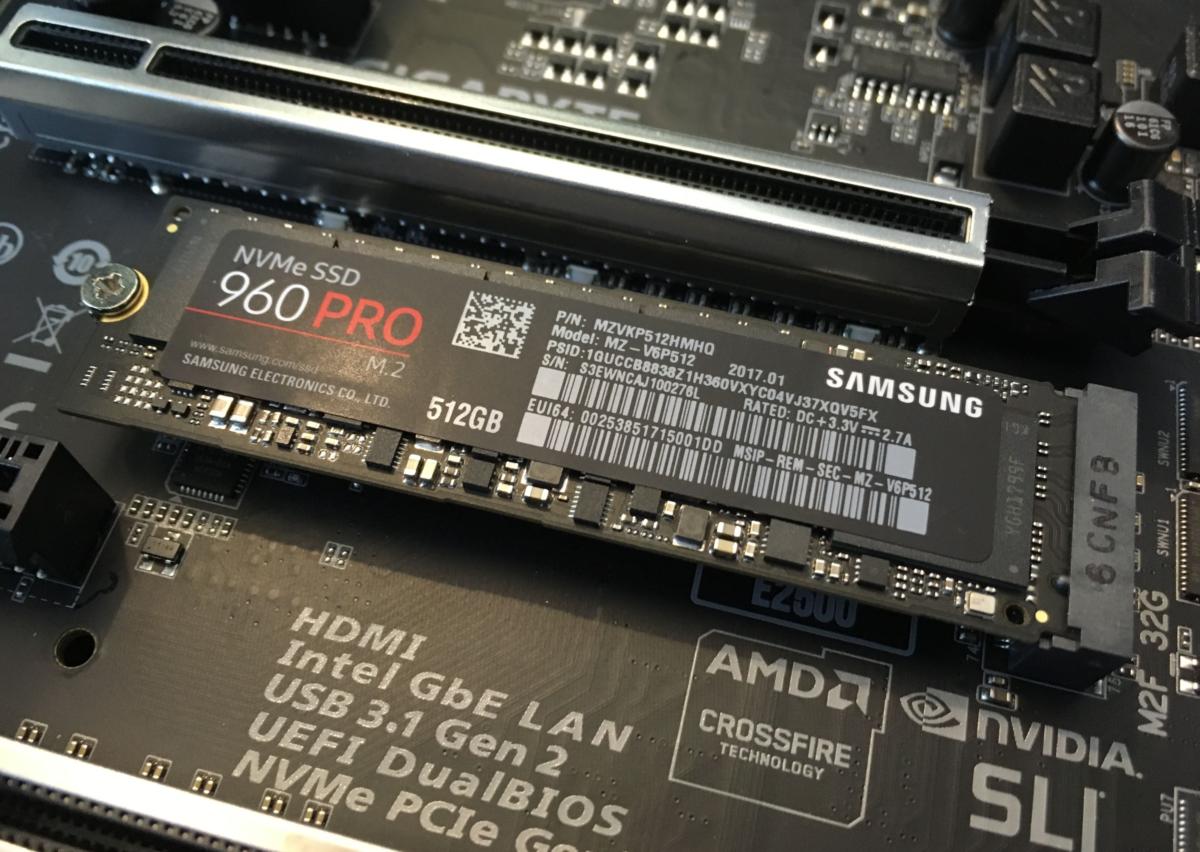
The Samsung 960 Professional NVMe SSD in an M.2 slot.
To get essentially the most out of an NVMe drive, you wish to run your working system on it, so you should have a system that acknowledges the drive and might boot from it. PCs bought through the previous 12 months or two shouldn’t have any downside booting from an NVMe drive, however help for that may be iffy in older motherboards. Do a Google seek for your motherboard and see if it helps booting from NVMe. You might want to put in a BIOS replace to your board. In case your {hardware} can’t boot from an NVMe SSD, your machine ought to nonetheless be capable to use it as a secondary drive.
What to search for in an SSD
Capability and worth are necessary, in fact, and an extended guarantee can alleviate fears of untimely knowledge dying. Most SSD producers provide a three-year guarantee, and a few nicer fashions are assured for 5 years. However in contrast to the olden days of SSDs, trendy drives gained’t put on out with regular client utilization, as Tech Report examined and proved years in the past with a grueling endurance check.
The largest factor to be careful for is the expertise used to attach the SSD to your PC. We go into deeper particulars and shopping for recommendation in our information on which kind of SSD you should purchase.
- SATA: This refers to each the connection kind and the switch protocol, which is used to attach most 2.5-inch and three.5-inch onerous drives and SSDs to your PC. SATA III speeds can hit roughly 600MBps, and most—however not all—trendy drives max it out. (Extra on that within the subsequent part.)
- PCIe: This interface faucets into 4 of your laptop’s PCIe lanes to blow away SATA speeds, to the tune of almost 4GBps over PCIe gen 3. These form of face-melting speeds pair properly with supercharged NVMe drives. Each the PCIe lanes in your motherboard and the M.2 slot in your motherboard may be wired to help the PCIe interface, and you should buy adapters that assist you to slot “gumstick” M.2 drives right into a PCIe lane. PCIe 4.0 drives are considerably quicker, however require an AMD Ryzen 3000-series or Intel Core Eleventh-gen (or newer) processor, together with a appropriate PCIe 4.0 motherboard.
- NVMe: Non-Unstable Reminiscence Categorical expertise takes benefit of PCIe’s bountiful bandwidth to create blisteringly quick SSDs that blow SATA-based drives out of the water. Try PCWorld’s “The whole lot it’s worthwhile to find out about NVMe” for a nitty-gritty deep-dive.
- M.2: That is the place issues get difficult. Many individuals assume M.2 drives all use NVMe expertise and PCIe speeds, however that’s not true. M.2 is only a kind issue. Positive, most M.2 SSDs use NVMe, however some nonetheless keep on with SATA. Do your homework. Many trendy Ultrabooks depend on M.2 for storage.
- U.2 and mSATA: You may additionally stumble throughout mSATA and U.2 SSDs, however each motherboard help and product availability are uncommon for these codecs. Some older Ultrabooks included mSATA earlier than M.2 grew to become widespread, and drives are nonetheless out there for those who want them.
Velocity issues, in fact, however as we mentioned most trendy SSDs saturate the SATA III interface. Not all of them, although.
SSDs vs. onerous drives
Do you want an SSD? “Want” is a powerful phrase, however we heartily suggest that everybody improve to an SSD. Strong-state drive speeds blow even the quickest mechanical onerous drives out of the water. Merely swapping out the onerous drive in your previous laptop computer or desktop for an SSD could make it really feel like an entire new system—and a blazing-fast one at that. Shopping for an SSD is well the very best improve you can also make for a pc.
SSDs value extra per gigabyte than mechanical onerous drives, although, and thus aren’t typically out there in ultra-high capacities. In order for you pace and cupboard space, you should buy an SSD with restricted house and use it as your boot drive, then arrange a standard onerous drive as secondary storage in your PC. Place your packages in your boot drive, stash your media and different information on the onerous drive, and also you’re able to have your cake and eat it too.
How we check SSDs
We check SSDs utilizing a wide range of artificial benchmarks (resembling CrystalDiskMark 6’s numerous checks) and real-world checks, together with 48GB transfers that showcase how a drive performs in widespread duties, and a grueling 450GB switch check that pushes an SSD’s cache efficiency to the brink.
The PCIe 3 checks utilized Home windows 10 64-bit working on a Core i7-5820K/Asus X99 Deluxe system with 4 16GB Kingston 2666MHz DDR4 modules, a Zotac (Nvidia) GT 710 1GB x2 PCIe graphics card, and an Asmedia ASM2142 USB 3.1 card. It additionally comprises a Gigabyte GC-Alpine Thunderbolt 3 card, and Softperfect Ramdisk 3.4.6 for the 48GB learn and write checks.
The PCIe 4 testing was finished on an MSI MEG X570 motherboard socketing an AMD Ryzen 7 3700X 8-core CPU, utilizing the identical Kingston DRAM, playing cards, and software program. All testing is carried out on an empty, or almost empty drive. Efficiency will lower because the drive fills up.
[ad_2]
Source link



